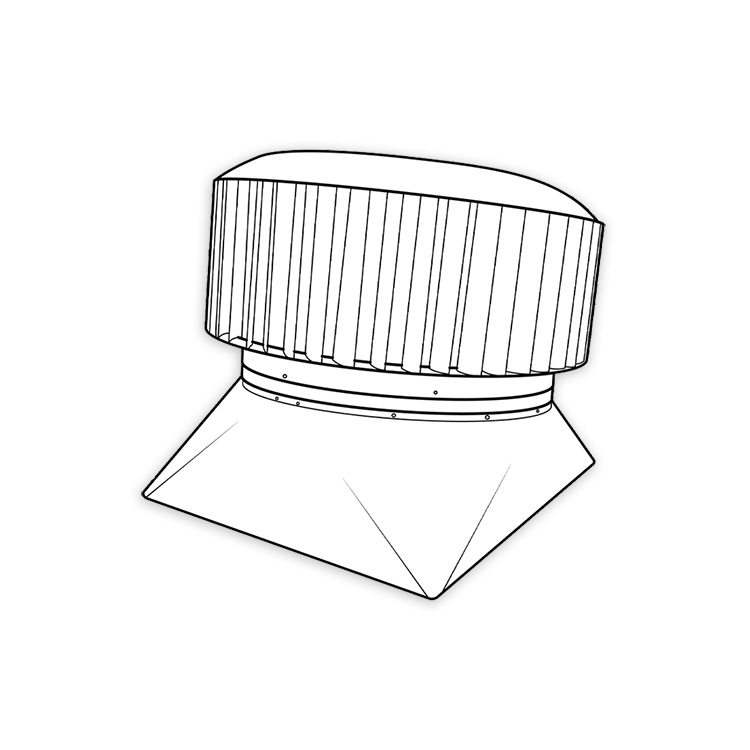Commercial Roof Vents Supply and Installation Price Greater Sydney Area
$1,915.00 – $3,365.00 & Free Shipping
Description
Vent Specifications – Click Here >
**Maximising Comfort and Efficiency: The Definitive Guide to Roof Ventilation in Australia**
With summers being sizzling-hot and winters warm and humid, roof ventilation is an extremely important topic for people living in the land down under. For both commercial and domestic properties, the energy-efficiency of your building will rely on the effectiveness of your roof area: that is, how much heat you can keep out during summer and how much warmth you can keep in during winter.If you are reading this because you have questions about roof ventilation, you’ve found the right place. Roof Ventilation is a complex topic but hopefully the following guide will help lift the fog and answer all your questions. We’ll also show you a number of handy hints for roof ventilation, specifically for homes and premises in Australia.
**How much does it cost to install a roof vent?**
This cost will be dependent on a range of factors, including the type of vent, size of roof and whether you pay for installation yourself or someone else install the vent for you. Price-wise, most homeowners will end up paying between $300-$600 per vent, including not only the cost of the vent itself, but any fees charged for installation. As such, it is wise to call suppliers and installers and get quotes before you make a final decision. It’s important to choose an appropriate vendor who will provide you with an accurate estimate for the vents and installation of one.
**Is roof ventilation necessary in Australia?**
Yes definitely. Proper roof ventilation is necessary for australia with our different climate, having roof ventilation will sure make your environment better for you and indoor your house will be more cooler when the hot summer season comes and your roof will last longer too.
With effective roof ventilation on the warm seasons not all the are will be trapped in your attic when you turn on your air conditioning no much work will be done in space coz all the heat will diffuse directly from your roof. Another sword to that is your energy bills will be reduce,
With roof ventilation on the cold seasons helps your roof breath well, reducing the moist hat collected in your roof because your roof have one way to breath, if moist in your roof haid be keep there for longer time or your roof has insucient ventilation, mould, mildew and other fungus might able to spore in your roof causing odour, rotting and structural damage.
**Can you install roof vents yourself?**
It is possible to install roof vents yourself but you do so at your own risk and should always double check that you have the skills and equipment required for safe installation. It might seem like a great DIY job, especially if you have fixing up a simple attic or very small space, or if you have a basic working knowledge of roofing or construction. But even when it seems like a ‘handyman job’, or you have a small roof with just a couple of vents, sometimes it’s best to consult a professional roofer to make the installation as safe and compliant with several building codes as possible.
**What are the disadvantages of roof ventilation?**
While the advantages of roof ventilation are many, this type of roof also has its disadvantages. It might be insufficiently installed or the whole chimney does not work properly, and that could lead to some problems, like leaking water, extra energy expenditure or the roof is getting less or even no effect at all when the weather conditions are extreme. It might be that the vents are neglected and filled with a heap of dirt, dust or small pieces of garbage that should be removed from there because this maintenance will be very expensive.
**How many roof vents do I need in Australia?**
It is difficult to specify how many roof vents your home should have without examining your roof’s specifics. Ideally, roof vents would let air escape at the same rate that it enters the attic area. This depends on a number of factors, such as the size and design of your roof, regional weather patterns, and the type of ventilation system. In general, the rule of thumb is to have one roof vent for every 150 to 300 square feet of attic space. If you are not sure what is required, ask a professional roofer to inspect your requirements.
**Which type of roof vent is best?**
There are different types of roof vents, each with their unique merit and consideration. These kinds are ridge vents, static vents, turbine vents and solar-powered vents. One should choose one type or another, depending on the roof structure, budget and his or her taste. Ridge vents, one type of roof vents, provide airflow constantly along the ridgeline of the entire roof. When wind blows, wind turbine or commonly called whirlybirds roof vents allows ventilation to utilise the energy of the wind.
**How much does it cost to install a whirlybird on a roof?**
Whirlybirds or turbine vents as they are otherwise regarded, are very common and effective for roof ventilation. Roof ventilation can cost anywhere from $200 to $400 for one whirlybird, inclusive of the cost of the vent installation. The final cost should also depend on other factors such as roof access, cleaning, modification and removal costs, if applicable.
**How do you install roof vents on an existing roof?**
Installing roof vents is a process that requires the roofer to take a lot of precautions and be very meticulous while completing the job, so that peaks performance can be achieved while simultaneously having minimal impact on the roof structure. Usually, when installing a roof vent on an existing roof, there is a need to open up the roof, cut a hole and install the opening that the vent will pass through, secure the vent into place, and finally, seal around the newly installed vent with products that ensure it will not open up when water gets underneath, since this can cause water to enter the home and cause damage. Depending on the type of vent that is being installed, one may also need to install flashing around the opening and maybe even cut into the sides of the opening to create the best opening for the shape of the vent, or in some cases, there is also a need to wire the vents.
**What are the disadvantages of whirlybirds?**
Although whirlybirds are cheap, energy-efficient and can cool a home, it doesn’t mean they are appropriate for all roofs in all climates. For example, in low-wind-speed areas, whirlybirds may not generate enough airflow to adequately remove the hot air from an attic. Whirlybirds can also be discordant or outright unattractive, spinning away on the roof like toys in a carousel.
**Do tiled roofs need ventilation?**
Yes, tiled roofs need ventilation too in order to prevent the space under the roof from retaining moisture from rain or to keep it from getting too hot inside the building. Although tiles have some degrees of thermal insulation, ventilating the space below the surface via appropriately placed vents (eg, on the roof ridge or gable ends) helps keep the attic air circulate while keeping a balanced heat and moisture cycle. Ventilation prevents mold from forming on the roof surface, for instance.
**What is the alternative to whirlybirds?**
There are also other options: ridge vents, static vents and solar powered vents can all be installed instead of whirlybirds. Ridge vents are installed along the apex of the roof and allow continuous ventilation, and don’t stick up so they can be less aesthetically offensive. Static vents (or infills) are stationary vents that rely on natural convection to move air.
**What is the easiest roof vent to install?**
Static vents are the easiest DIY installation for homeowners or enthusiasts because they don’t take much cutting and sealing as other vents do. With a static vent, building codes are not as strict compared with other ventilation systems, so it’s easier to get a permit. It goes right onto the roofing surface, or goes flush-mounted into the gable ends, with little difficulty for less-experienced homeowners. As with any product, be certain to follow manufacturer directions and safety guidelines.
**Are whirlybirds worth it?**
Whirlybirds can be an inexpensive, highly energy-efficient form of roof venting, but they will not suit certain buildings or local aspects of climate. Wind velocity is a key factor. For properties that have adequate exposure to wind, (whirlybirds can create a significant draft) whirlybirds can provide a source of roof venting that does not cost a great deal to install. Always weigh up other options, and consult an expert roofer to make an informed decision.
**Do roof vents let rain in?**
Well-installed and maintained roof vents should not allow water to infiltrate into the building under normal weather conditions. However, damage or poor installation may compromise the integrity of the vents which can lead to water ingress during heavy rainfall or storms. It is important to use good quality venting with adequate flashing and sealing and regular inspection and maintenance to rectify possible problems.
**What is the rule for roof vents?**
The exact rules for roof vents vary somewhat, but the general approach is tailor roof-vent installation to adequately ventilate the attic, considering both its dimensions and the type of build. (Earlier, I was using space, because that’s the easiest unit of measure of attic area, but you can calculate from footprint.) Standard guidance is one vent per 150 to 300 square feet of attic area (but it will vary depending on roof pitch, climate and, most notably, the kind of ventilation system you’re installing).
**Where should roof vents be installed?**
Roof vents should be placed to promote even air movement in the attic cavity. Of course, this will vary based on the ventilation system, but generally, reducing hot air pockets that can damage insulation is the goal, and vents will be positioned at or near the attic ridge or peak to draw in and distribute air based on natural convection currents. Venting can also occur at the gable ends or down low at the eaves, which serves as intake or exhaust, depending on the system.
**How many roof vents should I install?**
Determining the appropriate number of roof vents depends on
attic size, roof pitch, vent configuration, and other specifics But you don’t want to undershoot either: ventilation is very efficient at balanced intake and exhaust, and that is your goal. Depending on your attic size, roof pitch and vent configuration, in general you will want four intake vents for every square foot of attic space and one exhaust vent for every 300 square feet of attic space. For exact calculations for your property, consult a roofer or follow the American Society of Heating, Refrigerating and Air-Conditioning Engineers’ Guidelines for Mechanical Systems in Low-Rise Residential Buildings (2007).
So, in summary, you need to make sure your roof has a good level of ventilation if you want to keep your family comfortable and healthy, and if you want your roof to last as long as possible. Hopefully, your experience of choosing a ventilation solution is a good one and you are able to achieve what you want in terms of energy efficiency, affordability of ongoing maintenance and comfort in your home. With the knowledge we have now, with new innovations likely to appear in the future, and with plenty of options on the market, there’s no reason not to look into effective roof ventilation and choose a solution that doubles as a nice aesthetic accent to your roof. Whether you go with the timeless whirlybirds, fancy solar-powered static vents, or decide to go the traditional route with just the vents, it’s a decision that will truly pay off in the long run.
Additional information
| Size | 600mm, 950mm |
|---|---|
| Finish | Mill, Colorbond™ |



